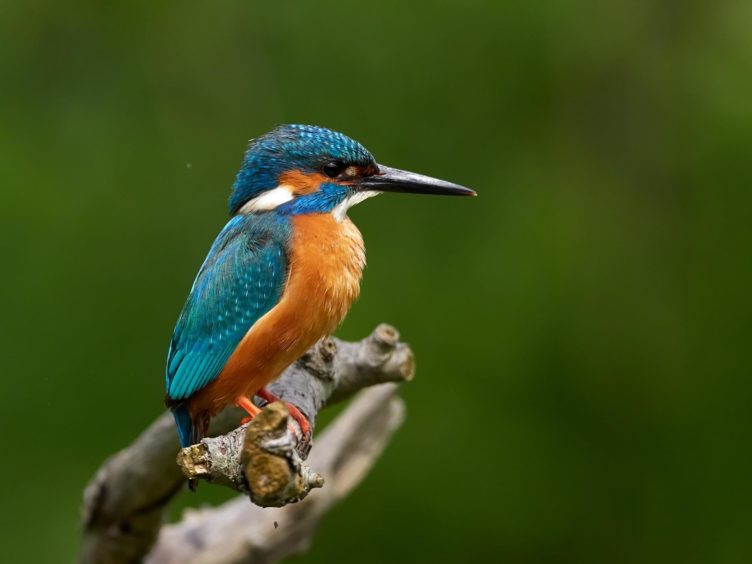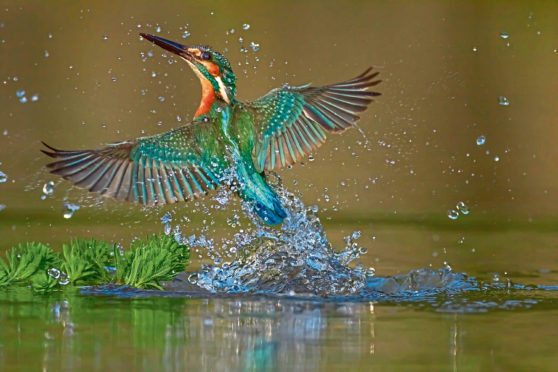Each time on the approach to this backwash pool of the River Devon, which lies in the shadows of the Ochils, a sense of excited anticipation sweeps over me, for here, in among the tangled stems of willow carr, there is every change of spotting an exquisite gem.
More times than not the kingfisher is there, but she usually sees me first, and whizzes away on blue-blurred wings. Often, I curse – fretful that once more I have missed the opportunity to observe this dazzling bird in more detail.
But that is the way with kingfishers, for despite their bright azure and tangerine plumage, they have the uncanny ability to blend seamlessly with the riverside. They are also shy birds, quick to take flight at the approach of a person. The most frequent sight of one is usually a streak of cobalt flashing low over the river, accompanied by a piercing call. It is always thrilling to see, but the encounter so fleeting that one is left with an inner craving to see more.
Occasionally, I strike lucky and spot this kingfisher on its fishing perch before she has seen me. I cautiously secrete myself behind a bankside alder and pop my head out from behind the trunk to observe her. I know this bird is a female because the underside of her bill is glinted with orange, whereas that of the male is darker. She waits patiently on the overhanging branch, scanning the water below carefully. Then, down she plops into the water, and just as quickly rises back again onto the branch.

If she has caught a minnow or stickleback, she beats it ferociously against the branch to stun or kill it. The action is so vigorous, that sometimes I can even hear the noise of the fish being pummelled. The catch is then juggled so that it points head-first down her throat and is swallowed. It is especially important to kill sticklebacks first in case their raised spines catch the gullet.
A minnow or stickleback is a nutritious catch, and even in winter, I imagine she wouldn’t need to snaffle many during the course of the day to sustain her.
I suspect one of the biggest survival problems for kingfishers in winter is when rivers turn to spate. During such times, the muddy brown churn makes the water visibility so poor it is nigh-on impossible to hunt for fish, especially since they will have hunkered right down upon the riverbed for shelter.
But on warm, calm days in spring and summer, the fishing is rich and prolific. Indeed, the ‘halcyon’ was the Greek kingfisher of ancient times, possessed with the power to keep the water calm while it built its nest.
Hopefully, the Gods will smile kindly upon my little River Devon halcyon, and nature’s calming influences will help see her through what is left of winter.
Info
In Courier Country, kingfishers often haunt estuaries in winter, including the Montrose Basin and the Eden near St Andrews.










